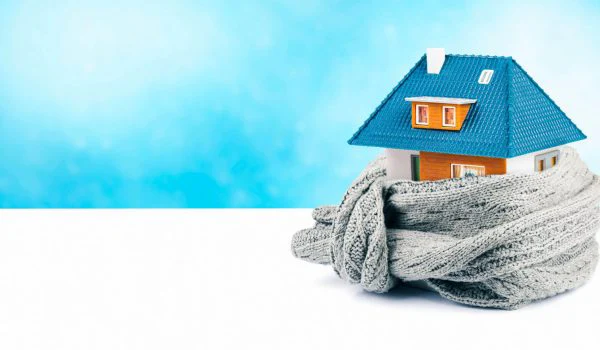
How Often Should You Replace Attic Insulation in LA Homes?
Los Angeles homes face a unique mix of heat, coastal moisture, wildfire smoke, and older construction. Attic insulation works hard here. It buffers summer heat, holds winter warmth on cool Valley nights, and helps HVAC systems run at a reasonable load. Yet insulation does not last forever. The right replacement schedule depends on material, exposure, and what happens in the attic over time.
This guide lays out practical timelines, local warning signs, and smart upgrade choices for LA homeowners weighing replacement. It also explains how a professional inspection from Pure Eco Inc. can confirm what you have, what you need, and how to get better comfort and lower bills without waste.
Typical Lifespans in Los Angeles Conditions
Manufacturers publish broad lifespans, but local climate and attic habits shorten or stretch those numbers. These ranges reflect field experience in Los Angeles, from Santa Monica to Pasadena to the South Bay.
Fiberglass batts: 20 to 30 years if clean, dry, and undisturbed. In many LA homes, batts get compressed by storage, wiring changes, and foot traffic, which cuts R-value. Smoke intrusion during fire seasons and duct leaks can also add dust and grime, reducing performance well before 20 years.

Blown-in fiberglass: 20 to 30 years with minimal disturbance. Settling can reduce thickness by 10 to 20 percent in the first few years. If contractors moved it during electrical or low-voltage work and did not top it off, it may underperform sooner.
Cellulose (blown-in): 15 to 25 years. Cellulose can settle more than fiberglass, especially in hot attics. It also absorbs moisture from roof or HVAC condensation faster than fiberglass. Modern borate-treated cellulose resists pests, yet heavy moisture exposure still shortens life.

Open-cell spray foam: 20+ years when installed correctly and kept dry. It can absorb moisture if roof leaks go unchecked. Remediation is harder than with loose-fill materials.
Closed-cell spray foam: 25+ years under a tight roof. It resists moisture well but requires professional evaluation if roof work is planned, since it adheres to sheathing.
If your insulation is from a 1980s or 1990s build and has never been upgraded, it is usually due. Many LA homes still sit at R-13 to R-19 in the attic. Current California Title 24 guidance targets R-38 to R-49 in most single-family homes. That delta is felt every July in the Valley and every December in the foothills.
Replacement Frequency vs. Performance Checks
Full replacement is not always necessary. The sensible approach is to evaluate performance every 3 to 5 years and replace when one or more of the following shows up:
- Visible contamination: rodent droppings, urine stains, or nesting trails along joists or ductwork.
- Moisture problems: damp, clumped, or stained insulation near roof valleys, chimneys, or bath fan terminations.
- Compression and gaps: batts pushed aside, thin spots around can lights, or uneven blown-in depth that exposes joists.
- Settling below target depth: attic rulers show less than required thickness for R-38 to R-49.
- Odors and dust: musty attic air, smoky residue after wildfire events, or dust streaks on registers that indicate leakage.
If everything is dry, clean, and near the target R-value, topping off can be smarter than full replacement. However, contamination or widespread compression usually means removal and new material.
Local Factors That Shorten Insulation Life
Los Angeles adds stress that many national timelines miss. Salt air near the coast increases corrosion on fasteners and can encourage light moisture in attics during marine layer mornings. Inland heat in the San Fernando and San Gabriel Valleys drives attic temperatures above 130°F on summer afternoons, which accelerates settling and exposes air leaks. Santa Ana winds push fines and ash into attics, especially where soffit screens are missing or torn. Older homes in neighborhoods like Highland Park, Silver Lake, and Mid City often have knob-and-tube remnants, patchy ventilation, and low, chopped eaves that make uniform coverage harder.
The roof system matters too. Dark shingles and minimal radiant barriers increase heat load on insulation. Ductwork in the attic leaks more than most owners realize. A 10 percent duct leak can mimic thin insulation, and the fix may involve both air sealing and insulation adjustment, not insulation alone.
How to Decide: Replace, Top Off, or Air Seal First
A straightforward attic assessment answers three questions: Is it clean, is it thick enough, and is it sealed?
If the insulation is clean but thin, adding blown-in material to reach R-38 to R-49 often pays back within a few cooling seasons. If the insulation is dirty or damp, starting fresh prevents sealing in odors and allergens. If the attic is full of gaps and penetrations, air sealing should precede or happen with the insulation work. Sealing recessed lights, plumbing stacks, top plates, and chases can cut energy loss by 15 to 25 percent on its own.
An experienced crew in Los Angeles will often remove contaminated insulation, vacuum the attic, seal air leaks with foam or mastic, adjust bath fan vents to the exterior, and then install new insulation to the correct depth. This sequence stabilizes comfort and stops hot and cold spots from returning.
Health and Safety Triggers That Demand Replacement
Beyond comfort and bills, some issues call for quick action. Rodent infestation is common in LA attics. The droppings, urine, and nesting material carry allergens and odor. Insulation soaked with contaminants does not clean up well. Wet or moldy insulation near a roof leak deserves removal too. If someone punched through plaster or lathe during a remodel and filled cavities with demolition dust, replacement restores air quality.
For pre-1980 homes, an inspection for asbestos-containing vermiculite is prudent. A test determines the next steps. Pure Eco Inc. coordinates with licensed abatement partners when needed.
Signs You’re Due in LA Neighborhoods
Owners describe the same patterns again and again. In Sherman Oaks and Encino, the upstairs rooms run eight to ten degrees warmer in summer, and the AC never cycles off during peak heat. In Mar Vista and Venice, morning dampness in the attic leaves cellulose clumpy and musty. In Highland Park and Eagle Rock, older roofs and minimal soffit ventilation lead to streaks of dust across fiberglass batts. If any of these sound familiar, the attic likely needs attention.
What R-Value Makes Sense in Los Angeles?
For most LA homes, R-38 to R-49 in the attic strikes the right balance. That typically means 12 to 16 inches of blown-in fiberglass, or 10 to 14 inches of cellulose, depending on product. With spray foam under the roof deck, the required thickness differs and must be evaluated case by case. If ducts stay in the attic, hitting the higher end of the range usually pays back faster. If the home has a cool roof, whole-house fan, or ducts inside conditioned space, R-38 often suffices.
Timeline: How Often Should You Plan for Replacement?
Assuming no contamination or leaks:
- Fiberglass or cellulose: plan an inspection at years 8 to 10, expect a top-off around years 10 to 15, and consider replacement between years 15 and 25.
- Spray foam: schedule checks every 5 years; replacement is rare before 20 years, but roof work may dictate partial removal.
If you have pests, roof leaks, heavy dust from construction, or wildfire smoke intrusion, replacement can make sense much earlier. The condition tells the story more than the calendar.
Cost, Payback, and Utility Programs
Costs vary with access, removal needs, and material choice. In Los Angeles, many projects that include removal, sanitation, air sealing, and new blown-in insulation land in the mid four figures. Topping off clean insulation usually costs less. Energy savings in LA often fall in the 10 to 25 percent range on heating and cooling, with bigger gains in Valley climates. LADWP and SoCalGas periodically offer rebates for attic insulation and duct sealing. These programs change through the year; a quick check during the estimate can confirm current incentives.
Why Professional Installation Helps in LA
DIY can work in open, walkable attics with clean conditions. Most LA attics are tight, irregular, and full of hazards: exposed junction boxes, low rafters, and fragile plaster ceilings. Professional crews bring insulation vacuums, HEPA filtration, soffit baffles, depth gauges, and the patience to seal dozens of tiny penetrations that sap performance. A proper job documents pre- and post-depths, shows air sealing locations, and confirms bath fans vent outdoors, not into the attic. That level of detail protects comfort and reduces callbacks.
What to Expect from a Pure Eco Inc. Attic Assessment
A typical attic insulation Los Angeles inspection runs 45 to 90 minutes. The technician photographs existing insulation, measures current R-value at several points, checks for rodent activity, and tests ventilation and duct leakage visually. If removal is needed, the plan addresses safe extraction, sanitation, and sealing. If a top-off suffices, the estimate includes target depth and coverage. Homeowners receive clear recommendations: replace, top off, or repair first. The goal is practical comfort and a fair price, not overselling.
Simple Homeowner Checks Between Visits
A few quick tests help track performance:
- Peak-heat test: On a 95°F afternoon, compare attic-adjacent rooms to central rooms. If the difference exceeds 6°F, the attic likely needs help.
- Visual check: Use a flashlight at the hatch. If joists are visible across large areas, the insulation is thin.
- Allergy watch: Increased dust on surfaces or persistent attic odor points to contamination or air leakage.
- Utility bills: If summer kWh or winter therms trend up year over year without lifestyle changes, insulation or duct leaks may be at play.
- Roof and bath fans: After a rain, look for stains near valleys. Turn on bath fans and confirm airflow at the exterior cap.
If any of these pop up, a professional assessment is the next step.
Material Choices for LA Homes
Blown-in fiberglass is popular for its stable R-value and moisture resistance. Cellulose offers strong air resistance and recycled content, with the trade-off of more settling in hot attics. Spray foam shines in complex roofs or when bringing the attic into conditioned space, but it costs more and complicates future roof work. Many Los Angeles projects pair air sealing with blown-in fiberglass to reach R-38 to pureecoinc.com r38 insulation Los Angeles R-49 at a solid value point. In coastal zones, attention to ventilation and bath fan terminations is key regardless of material.
Ready for Clear Answers and a Solid Plan?
Insulation should be quiet and reliable. If the attic is making itself known through hot rooms, musty smells, or rising bills, it is time to look. Pure Eco Inc. specializes in attic insulation Los Angeles projects across the Westside, the Valley, the San Gabriel foothills, and the South Bay. The team evaluates, documents, and installs to current standards, with straightforward options and clean work.
Call or request an inspection online. A short visit delivers a clear path: keep, top off, or replace. Then enjoy an LA home that stays cooler in August, warmer in January, and calmer year-round.
Pure Eco Inc. provides professional attic insulation and energy-saving solutions in Los Angeles, CA. For over 20 years, our family-owned company has helped homeowners improve comfort, reduce utility bills, and make their homes more energy efficient. We specialize in insulation upgrades, spray foam installation, and attic cleanup for homes across Los Angeles County. At Pure Eco Inc., we believe in treating our customers like family and creating a greener, healthier living environment for every household we serve. Call today to schedule an attic insulation inspection or get a free estimate. Pure Eco Inc.
422 S Western Ave #103 Phone: (213) 256-0365 Website: https://www.pureecoinc.com Social Media:
Facebook |
X |
Instagram |
Yelp
Map: View on Google Maps
Los Angeles,
CA
90020,
USA